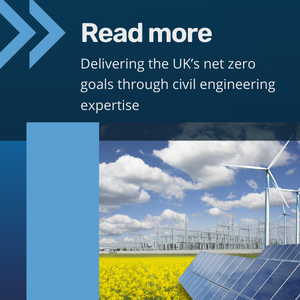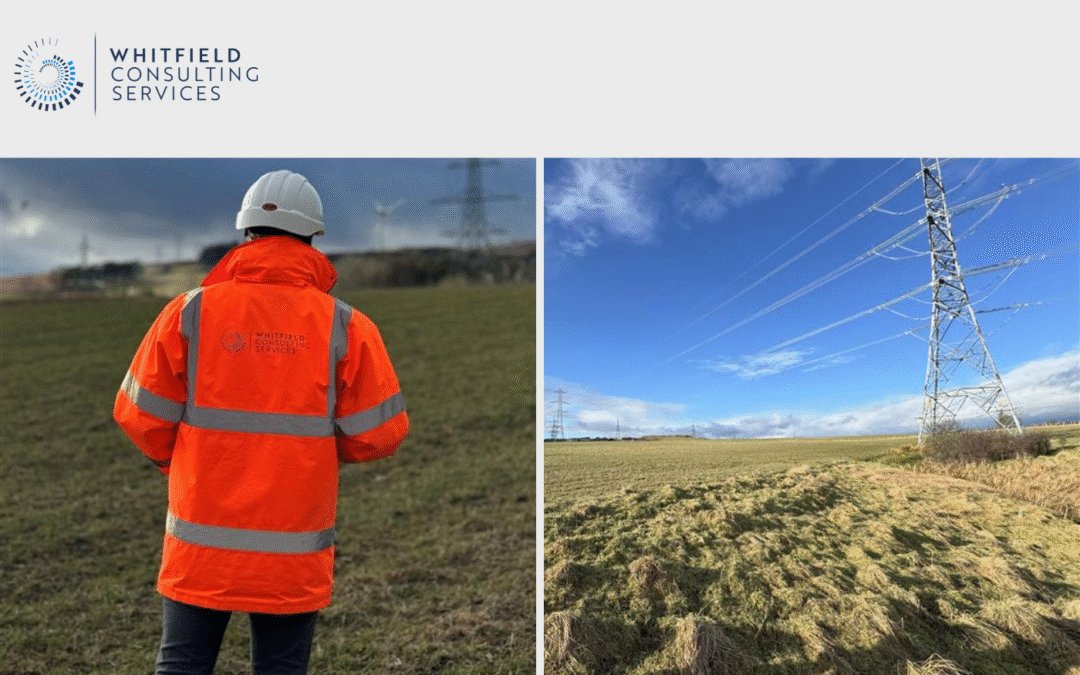Whether building new substations, or deploying large-scale battery storage, the early stages of project design can go a long way to ensuring successful delivery.
Front-end design is where early-stage assumptions about a site and its constraints are investigated in detail, often forming the basis for many subsequent engineering and construction decisions. Without rigorous feasibility input, projects risk adopting layouts or design choices that later prove unbuildable, unsafe, or economically inefficient.
We spoke with Dr Natalja Petkune, Director at Whitfield Consulting Services (WCS), about the value of early-stage civil engineering input in Power & Energy projects, and how the WCS team helps clients develop viable solutions from the outset.
From desktop to site
WCS structures its front-end support around the realities of energy infrastructure delivery. Every project begins with a desktop review of existing information, but the team emphasises the importance of site visits to uncover conditions that drawings and CAD models alone do not reveal or are very limited in the first place.
“It’s very important for us to visit the site,” explains Dr Natalja Petkune. “Site visits usually allow us to see more constraints and to understand the project in much greater depth compared to what would have been available in the initial information package.”
For example, WCS supported its client Aureos in a study for Scottish and Southern Electricity Networks (SSEN), exploring site options for a new 132kV gas-insulated switchgear (GIS) building. The site visits allowed WCS’s engineers to engage directly with the site team, assess constraints first-hand, and develop additional options beyond those originally being looked at.
Each potential location was then scored against a set of criteria, including existing constraints and ground conditions, constructability, health & safety risks, sustainability, access and traffic routes, land, consents, environmental factors & Biodiversity Net Gain, whole-life value, and programme impacts.
“On site, we identified features that were not visible in the initial package,” Natalja recalls. “For example, we discovered a watercourse that had not previously been recorded.”
In some cases, further site inspections are undertaken in order to assess existing structures. Engineers may carry out non-destructive or intrusive testing to confirm the details and condition of steel, concrete, or foundations, and to have sufficient information for the structural assessment to confirm if a structure can be safely re-used and is capable of accommodating new loads.
“The first step is always to check whether an existing structure can be reused,” says Natalja “If strengthening is possible, that may be the most efficient solution. But if the structure is in very poor condition, demolition and replacement may be the only viable option.”
Why early-stage support matters
Early-stage engineering is critical because decisions made in the front-end phase set the trajectory for the entire project. “Front-end engineering allows us to highlight both risks and potential efficiencies,” says Natalja. “By testing the feasibility of each option early, we can help clients avoid changes later that add cost and complexity.“
One of the common pitfalls is drainage. At the feasibility stage, some clients may assume, for example, that site infiltration will be viable based on desktop research, only for site investigations to reveal impermeable strata. “We’ve heard of drainage strategies failing on projects because they were based on assumptions rather than testing,” Natalja notes. “Every early-stage decision has to be backed by data if projects are to progress without costly redesign.”
“As engineers, we are not only looking to identify potential risks and constraints,” she adds. “We are looking for ways to make schemes simpler, faster, and more efficient, incorporating value engineering and sustainable solutions wherever possible.”
For example, at Monk Fryston – a 320MW / 640MWh battery energy storage system (BESS) in North Yorkshire – WCS applied this approach to site topography. The original stepped-terrace design that we inherited from a previous design stage created excessive bulk earthworks, drainage complications and constructability challenges. By reassessing the cut-and-fill strategy using 3D terrain modelling, WCS developed a balanced earthworks and grading solution which reduced material export, improved drainage performance and simplified construction.
Managing risk from the outset
A core part of front-end engineering is identifying risks early, before they escalate into costly delays.
“The technical challenges facing front-end engineers vary with each project, but recurring themes emerge,” says Natalja. “These include ground conditions, flood risk, unexploded ordnance (UXO), access and transport, land ownership, buried or overhead services, and groundwater.”
In Blackhillock in Keith, Scotland, WCS carried out a feasibility study for a proposed Battery Energy Storage System (BESS). A site visit allowed us to investigate existing site conditions and potential constraints. Here, artesian groundwater pressure and steep gradients shaped the cut-and-fill strategy and foundation approach. Without early investigation, these conditions could have led to excessive retaining structures and programme delays.
Legacy infrastructure is another common challenge. At one substation project, feasibility studies revealed asbestos in existing buildings and the potential for an unexploded ordnance. “These are issues that can delay projects,” warns Dr Petkune. “By flagging them early, we allow our clients to programme around them and engage specialist contractors in good time if required.”
Access is equally critical. Delivering large transformers or cranes demands detailed planning to ensure safe and efficient routes. “Looking at access and transportation requirements is essential,” notes Natalja. “Sometimes existing routes are restrictive, and significant works may be needed, or we need to consider alternative access.”
Finally, planning and regulatory constraints form another layer of risk. Drainage and flood risk, ecological habitats, and visual impact all require credible strategies from the outset. Addressing these factors early helps avoid redesigns or consent delays that can otherwise derail a programme.
The WCS approach
A front-end engineering design undertaken by WCS gives clients clarity across vital aspects of early project development. It brings together ground investigation review, cut-and-fill assessment, drainage strategy, and constructability planning into a single coordinated scope. By combining these elements, clients receive not only technical analysis, but a structured view on constructability, phasing and where the principal risks and potential opportunities for the value engineering design lie.
Planning support is also embedded, ensuring that conditions related to engineering – such as drainage solutions, highway agreements (S278 and S184) and remediation strategies – are realistic from the outset. This avoids the common pitfall of planning approvals resting on engineering assumptions that cannot be delivered.
The package is underpinned by a risk and opportunities register, a document that remains a reference point throughout tendering and early delivery. As Natalja explains, “Our package gives clients a complete picture. It is not only about identifying risks, but also about highlighting efficiencies and ensuring that every assumption has been tested. That is what allows them to make informed decisions.”
Contact us
The growing demand for substations, grid connections, and energy storage means that early-stage engineering support has never been more important. By interrogating site conditions, access, drainage and constructability before detailed design begins, WCS helps clients avoid costly redesigns, manage programme risks and deliver infrastructure that is both practical and resilient.
To discuss feasibility and front-end support for your next energy project, contact WCS at 020 3581 7847 or info@wcs-consult.co.uk.

